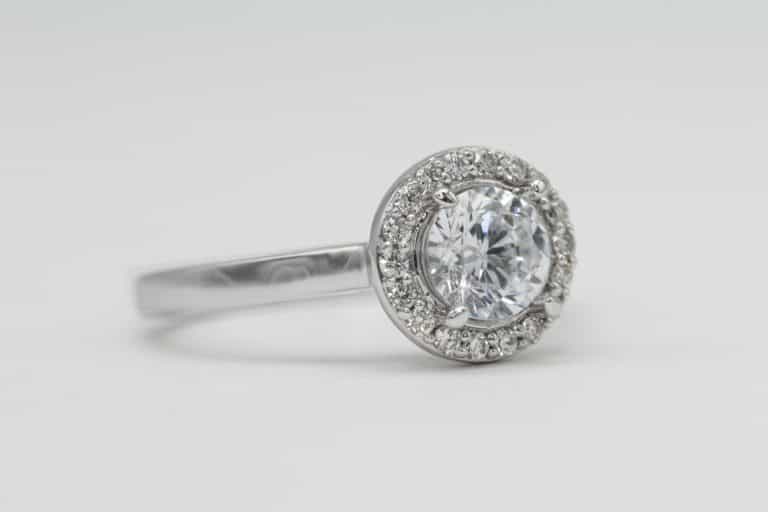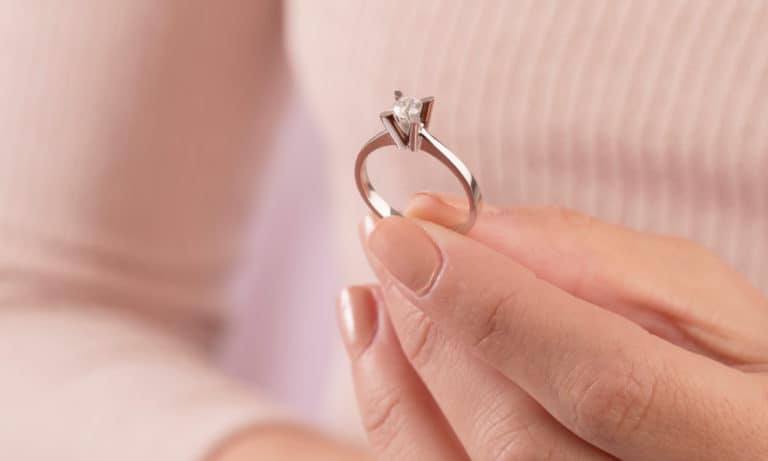
Their rarity and spectacular beauty make diamonds among the most sought-after precious stones. So rare is diamond that the discovery of a palm-sized rough stone elicits worldwide joy and jubilation.
If you are keen to learn about the biggest diamonds the world has ever discovered, you have come to the right place. Keep reading to find out just what is the biggest diamond in the world.
How A Rough Diamond Is Measured
Contrary to popular belief, the size of a diamond is not measured solely by its carat weight. A diamond’s size is measured by its length to width ratio, which is also the stone’s diameter in millimeters. One carat of a diamond is approximately 0.20 grams. Here’s a fun fact: To discover one carat of diamond, miners have to mine up to 250 tons of rock. This explains why diamond is so rare and costly.
That said, when a piece of rough diamond is discovered, it is common for it to be sized by carat weight. So when we talk about the biggest diamond in the world, keep in mind that we are talking about the diamond’s carat weight. So, let’s find out what is the world’s biggest diamond in carat weight.
What Is The Biggest Diamond In The World?
The Cullinan is the biggest rough diamond in the world. The stone was discovered on 26 January 1905 at the Premier mine in Cullinan, a mining and tourist town next to Pretoria, South Africa. The Cullinan diamond initially weighed 3,106.75 carats (621.35 grams) and measured 10.1 centimeters in length, 6.35 centimeters wide, and 5.9 centimeters deep.
Fredrick Wells, the mine’s surface manager, discovered the stone 18 feet below the earth’s surface. Wells then presented the stone to the mine’s founder and chairman, Sir Thomas Cullinan. The Transvaal provisional government subsequently purchased the diamond from Cullinan and then presented it to King Edward VII of Britain on his sixty-sixth birthday.
To divert would-be thieves as the diamond made its way from Africa to London, Edward organized a phony diamond to be sent via a ship guarded by detectives. Meanwhile, the actual Cullinan diamond was sent through post mail in a plain box.
Joseph Asscher of the Asscher Diamond Company in Amsterdam was responsible for cutting the Cullinan. Asscher had cut the Excelsior Diamond, the world’s biggest diamond before the Cullinan was discovered. The process of planning to cut the stone and finding suitable planes took six months. When Asscher first attempted to cut the Cullinan in half, his steel blade broke. But, on the second attempt, the diamond split as planned.
Asscher later split the Cullinan into nine large stones and an estimated 100 smaller pieces. Let us take a closer look at the nine large stones cut from the main Cullinan.
Cullinan I

Cullinan 1 was cut from the top part of the bigger Cullinan and is the second-largest clear-cut diamond in the world after the Golden Jubilee Diamond. Cullinan I is also known as the Great Star of Africa and is a pendeloque-cut or pear-shaped diamond. The diamond weighs 530.2 carats, has 74 facets, and measures 5.89 cm × 4.54 cm × 2.77 cm. As the largest clear diamond cut from the Cullinan, this first diamond has few small inclusion and is set on England’s Sovereign’s Sceptre with Cross.
Also known as the Great Star of Africa, Cullinan I is ensconced in loops and is adorned as a pendant or brooch. The stone was last valued in 1908 and was estimated to be worth $2.5 million.
Cullinan II
Cullinan II is also known as the Second Star of Africa. It has 66 facets, weighs 3178.4 carats, and measures 4.54 54 cm 4.08 cm x 2.42 cm. The diamond is set in the Imperial State Crown and has few inclusion and scratches and a tiny breakage on the girdle.
Cullinan III
The third stone cut from the main Cullinan diamond is also known as the Lesser Star of Africa. The pendeloque-cut brilliant weighs 94.4 carats and is set on Queen Elizabeth II’s brooch. Before being set on the queen’s brooch, the diamond decorated Queen Mary’s crown in 1911. A year later, Cullinan III was placed on another queen’s crown, the Delhi Durbar Tiara. The diamond has also previously been set on the Crown’s Coronation Necklace
Cullinan IV
The Cullinan IV is also known as the Lesser Star of Africa. The square-cut diamond weighed 63.6 carats and was initially set on Queen Mary’s crown until 1914 when it was removed and placed on Queen Elizabeth II’s brooch, where it sits to date.
Cullinan V
The fifth Cullinan stone is an 18.8-carat heart-shaped diamond. It was placed at the center of a brooch that decorated Queen Mary’s stomacher worn at the 1911 Delhi Durbar. The larger Cullinan V is surrounded by smaller pieces of diamonds, which highlight the bigger stone. Besides being set on the stomacher, the queen also suspended the Cullinan V from the Cullinan VII brooch and the VII necklace.
Cullinan VI
Weighing 11.5 carats, the Cullinan VI is a marquise-cut stone suspended from the brooch holding the Cullinan VIII. It also forms part of the Delhi Durbar emerald jewelry set worn by Queen Mary. The sixth and eighth Cullinan diamonds can be attached to create another brooch, flanked by 90 plus tiny diamonds to create a heart-shaped brooch.
Cullinan VII
Like the sixth Cullinan, the seventh one is marquise-cu and weighs 8.8 carats. King Edward VII gifted the diamond to his wife, Queen Alexandra, but Alexandra passed it on to Queen Mary after the king’s death. Mary went ahead and set it as a pendant on the Delhi Durbar necklace.
Cullinan VIII
The eighth Cullinan diamond is oblong-cut and weighs 6.8 carats. The brilliant stone decorates a brooch that is part of the Delhi Durbar stomacher and jewelry set. The eighth and sixth Cullinan can be attached to form a full brooch.
Cullinan IX
The last and smallest of the main diamonds to be cut from the major Cullinan is the Cullinan IX. The stone is pendeloque and emerald-cut and weighs 4.39 carats. It is set on the Cullinan IX platinum ring worn by Queen Elizabeth II.
The Golden Jubilee Diamond
https://www.youtube.com/watch?v=7X5q8JIUIlM
When talking about the biggest diamond in the world, the Golden Jubilee Diamond deserves mention. While the Cullinan is the world’s largest uncut diamond, the Golden Jubilee Diamond is the biggest cut and faceted diamond, followed by Cullinan I.
The De Beers mining conglomerate discovered the Golden Jubilee Diamond in 1985 at the Premier Mine, where the world-famous Cullinan Diamond was found. The diamond weighs 545.67 carats (109.13 grams), 15.37 carats heavier than the Cullinan 1.
Today, the Golden Jubilee Diamond is not only the largest cut and faceted diamond, but it is also one of the most attractive. But, when the stone was discovered, it didn’t have a striking appearance and was subsequently referred to as the Unnamed Brown Diamond. Once it was cut and faceted, the diamond acquired a fancy yellow-brown color that is truly unmatched.
Uncut, the stone had several crevices and inclusion, and a special cutting technique was used to ensure a perfect cut. The cutting was done in a vibration-free chamber to prevent any mishaps that would cause the stone to break badly. It took two years to cut, polish, and facet the stone to give it its current yellow-brown fiery appearance and the attractive cushion cut.
In 1995, a decade after the stone was discovered, a group of Thai businessmen bought it from De Beers. They had it blessed by Pope John Paul II at the Vatican, the Supreme Imam, and Thailand’s Supreme Buddhist Patriarch before presenting it to King Bhumibol Adulyadej for his 50th coronation anniversary. The king changed the stone’s name to The Golden Jubilee Diamond.
The world’s largest cut diamond is housed at the Royal Thai Palace, and it is part of the Crown Jewels. Today, it is worth between 4 and 12 million USD, but it may fetch more considering its financial, historical, and sentimental value. Naturally, this highly valuable stone is guarded carefully.
Recent Diamond Discoveries

It has been many years since the Cullinan and Golden Jubilee Diamonds were discovered, and since then, there was a lull in diamond discoveries.
But, in April 2019, the Lucara Diamond Corp discovered a rare diamond in Botswana. The 1785-carat Sewelo diamond became the second biggest uncut diamond in the world. Louis Vuitton fashion house went ahead and bought the Sewelo diamond in January 2020. The company is looking to polish, cut, and display the exclusive stones.
A few years earlier, in 2015, Lucara had recovered what was then the second-largest uncut diamond. The Lesedi La Rona measured 1109 carats and was sold for a whopping $53 million to British multinational jeweler Graff Diamonds.
Summary
It takes billions of years for diamonds to form and travel to the surface of the earth. Naturally, when a seemingly small quantity of this precious stone is discovered, the world honors and celebrates the find. After all, diamonds play a critical role in industry and, of course, the jewelry market, and every discovery is highly welcome.






